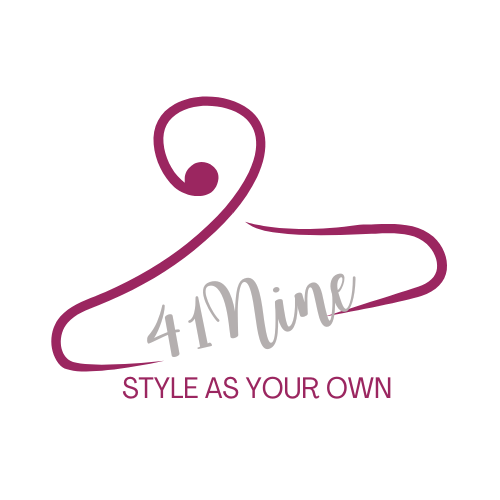The Stark Reality of Brand Positioning
Brand positioning is the bedrock of your company's identity. It's the strategic placement of your brand in the expansive marketplace of options and impressions.
Consider the iconic brands of our time – Spotify and Apple Music, Nike and Adidas. They offer products that serve the same basic functions, yet they occupy distinct positions in our minds. This differentiation is no accident; it is the result of deliberate and insightful brand positioning.
Failure to grasp this can leave companies floundering in a sea of competition. Your brand's position in the market is the difference between being just another option and being the top-of-mind choice.
It's a simple truth: the brands that invest in understanding and cultivating their position are the ones that lead the pack.
Examples from the Hall of Fame
Coke vs. Pepsi: One's the classic, the other the rebel: same soda, different stories.
Nike vs. Adidas: One champions the athlete within, the other celebrates creativity in sport. Both chase the same ball but with distinct plays.
Mimi Turner, Head of EMEA & Latin America, The B2B Institute, asks the question: What if Coca-Cola took a B2B marketing approach?
Imagine a world where 'B2B Coke' bombarded you with features, discounts, and white papers on why it's the superior fizzy drink. It sounds out of place, doesn't it? That's because Coca-Cola knows that B2B businesses often overlook that most competing products are nearly identical. It's not the minute 3% difference in product features that captivates consumers – it's the brand's story, emotional appeal, and the experiences it promises in advertising and branding.
If Coca-Cola decided to pitch itself as a B2B product, you'd likely be bombarded with ads detailing its 'optimally sweetened carbonation' or 'ergonomic bottle design' - a stark contrast to the emotionally charged campaigns we're familiar with. Actual Coke adverts don't sell you a drink; they sell you a feeling, a moment, a memory.
"Just like every sweet, brown and fizzy drink in the soft drink category has the same features, pretty much every CRM, marketing automation tool and project management software system has the same features, too. And they all say the same things about themselves ("All your tools in one place," anyone?).
At the B2B Institute at LinkedIn, we call these love letters to product 'The Product Delusion.' And in B2B advertising, The Product Delusion is everywhere."
Turner mentions how even Jeff Bezos realised advertising isn't a tax on a mediocre product. It's an investment in building a brand that effortlessly comes to mind when deciding. Bezos's pivot from dismissing advertising to embracing it as Amazon's journey shows that powerful advertising can make a brand a household name and a staple in consumer decision-making.
'The Product Delusion' is a common pitfall where B2B ads extol their product's virtues without crafting a memorable brand story. This approach misses the mark on what truly influences buying decisions, especially in complex B2B scenarios. Herbert A. Simon's concept of 'Satisficing' from his Nobel-winning work underscores this: in the complex world of decision-making, people often choose the option that is 'good enough' – the one they know and remember.
The Ehrenberg Bass Institute's study on B2B brand growth reveals a similar trend. Even with a plethora of options, most buyers revert to familiar choices - a clear indication that in the high-stakes world of business purchasing, familiarity trumps perfection. The Ehrenberg Bass Institute's research on B2B brands affirms that nearly half of buyers simply "went with what they knew". This behavioural economics teaches us that simple, memorable branding cues are crucial for recall in complex decision-making scenarios.
Branding Is Not An Optional Flourish; It's Essential
This is a clarion call to companies: branding is not an optional flourish; it is essential. The proper branding ensures your product is the 'good enough' choice – the one people remember and trust.
Striving for a perfect product is futile if the brand isn't memorable.
It's not the minute differences that sway decisions; it's the ease with which a brand comes to mind.
It's about simple stories, relatable characters, and catchy jingles that train consumers' brains to remember your product amidst a jungle of choices.
Companies that neglect the power of brand positioning are choosing to ignore the essence of their own identity. They'll struggle to be anything more than a background actor in the competitive narrative.
In essence, brand positioning is more than where you sit in the market – it's where you live in the minds of your consumers. And to those who undervalue this, heed the lesson: in the vast playing field of commerce, the prize doesn't always go to the best product but often to the best-known brand.
Understanding Brand Repositioning: The What and The Why
Brand repositioning is the strategic process of changing the market's perception of your brand to better meet customer needs, counteract competitors, or reflect company direction changes. It's vital for maintaining relevance and ensuring your brand continues to resonate with its audience. Your brand's position is ultimately determined by consumer perception, influenced by their experiences and the image you project.
The Significance of Repositioning
It's about creating a unique space that makes your brand not just seen but preferred and loved. Think of it as the mental real estate your brand owns. Is your brand the luxury choice or the go-to for value for money? Is it seen as innovative or traditional? This perception isn't just about price; it can span attributes like quality, reliability, sustainability, and more.
Signs That Your Brand Needs Repositioning
Declining sales or market share
The brand's current image is outdated or no longer reflects the company's vision
Shifts in the target audience's preferences or demographics
Increased competition causing market dilution
Kickstarting Your Brand Positioning Journey: Two Golden Questions
"If our brand were a historical figure, who would it be?"
Think of it as humanising those
brand vibes.
"How would you introduce our brand to a friend?"
Think of it as matchmaking for brands and consumers.
Here's a list of further questions from the consumer research company Attest to gauge your brand's position and image.
The questions are designed to prompt responses that will give you a clear view of your brand's position in the eyes of your customers who matter most.
What is your immediate thought when our brand is mentioned?
This open-ended question shows what people think when they see a brand. It may be the customer service that people remember first when you'd like to be remembered for your price-to-quality ratio. This is a great starting point for figuring out your current positioning.
How did you first learn about our brand and its offerings?
How your brand is discovered is relevant to its positioning because it allows you to understand which channels and messages work best with your target audience. In addition, people often form their first impression of your brand based on the channel you use.
Share your initial reaction to our brand.
Was it love at first sight, or did they grow to like you? Our first impression of a brand often sticks with us and solidifies its positioning in our minds, so find out what people think of your brand or product when they first see it.
Were there any other brands you considered?
Positioning gains significance when contrasted with the competition: it's essential to understand which brands customers view as your peers. Establishing your brand's positioning isn't done in isolation; it requires a clear-eyed view of how your brand stacks up against rivals. Being perceived as reliable and cost-effective is advantageous, but the comparison with where your competitors fall truly informs the value of that perception.
Why did our brand win over the others?
Building on the previous question, you can probe further into how people differentiate between specific brands in your product category and what they value in your brand. This exploration reveals broader consumer priorities: Is price the overriding concern, or do they place higher importance on factors like sustainability, customer service, or the convenience of location?
Please rate our brand and competitors on various aspects on a scale of 1-10.
Once you've pinpointed the attributes consumers deem crucial while shopping in your category, invite them to score your brand alongside competitors on these aspects. This straightforward task sheds light on customer perceptions of your brand compared to others, aiding in creating a straightforward perceptual map.
What is the most significant difference between our brand and its closest competitor?
If your brand is up against another, ask this question to uncover what consumers believe differentiates it from the competition.
What adjectives would you use to describe our brand?
Word associations can reveal the thoughts and feelings that your brand evokes. Frame this as a multiple-choice question, offering various descriptive word options. Ensure that you're not merely fishing for compliments - include less favourable adjectives, ones you'd rather they don't pick!
Here are some options:
Simple
Complex
Expensive
Cheap
Reliable
Adventurous
Classy
Authoritative
Calm
Down to earth
Inclusive
Luxurious
Practical
Indulgent
Accessible
Inspirational
Witty
Inspiring
Safe
Calm
Innovative
Creative
Flexible
If our brand was personified as a celebrity, who would it be?
At times, likening your brand to a celebrity can be more intuitive for people than summarising it briefly. Choose celebrities known to your audience who embody distinctly different qualities - for instance, George Clooney and Justin Bieber or Miley Cyrus and Michelle Obama.
Who is our brand's ideal customer?
It's likely that your customers don't view themselves as part of a 'target group.' However, what terminology might they use if asked to characterise their consumer identity?
Has your view of our brand evolved recently?
Unfortunately, positioning is rarely static - unless you're a giant like Coca-Cola - determine what exactly sparked that change.
What emotions do you associate with using our brand?
Does your brand instil confidence in its buyers? Do they take pride in owning your products, eager to flaunt them, or look forward to your latest innovations without fearing a steep learning curve? Understanding the emotions and motivations behind your brand's purchases can significantly enlighten you on why customers choose you, thereby clarifying your market positioning.
Which factors do you weigh when choosing products in our category?
To craft a perceptual map, pinpoint the two crucial elements customers weigh when browsing your product domain. Is it price and quality or sustainability and innovation?
How would you introduce our brand to someone else?
This open-ended question is invaluable for uncovering the aspects people emphasise about your brand, illuminating your market stance. Seek out frequently mentioned words or phrases and cluster similar terms in word clouds to visually represent this information.
What would make you consider switching from our brand to another?
What would a price drop mean for your positioning? Or is your competitor introducing a sustainable line of products?
Can you describe your last experience with our brand?
Your brand positioning transcends mere product features or pricing; it encompasses the overall experience and satisfaction your target audience derives from interacting with your brand, offering valuable insights into where your brand is positioned in the market.
Ultimately, brand positioning and repositioning is not just a marketing concept; it's an ongoing strategic imperative for any company aiming for longevity and market dominance.
Stay attuned to market changes, consumer trends, and competitive dynamics to keep your brand, not just relevant, but revered.
Ignore it at your peril, for in the grand marketplace, the spotlight falls on something other than the brand with the most features.
From Mirror to Market
Lulu ✍︎

Trending
Skin Tone vs Undertone
My Dress is too Short - Now What?

About me

My professional odyssey over the past 25 years has been a journey through a kaleidoscope of fields- Technology, Hospitality, Art, Retail, and beyond. Yet, if there's one passion that’s remained constant, it’s the art and joy of styling.

Explore My Style Picks
The fashion finds, scents, and digital gems that make every day feel like your best day. Style that works with you, not against you.






